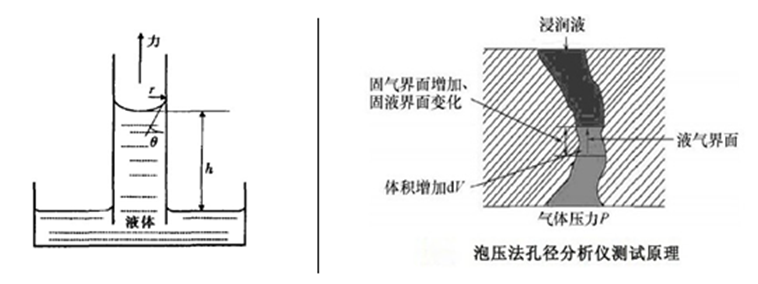![]()
Probe current voltage pin 420*4450 head diameter 5.0 over current current and voltage pin
![]()
Shunluo tantalum capacitor / main push A type B / partial spot / advantage order / fast delivery
![]()
TP-IP4220CZ6 5V 0.35PF breakdown voltage 6V SOT
![]()
Brand AVX TPSE226M035R0125 Low impedance tantalum capacitor AVX 22
![]()
Electronic scale crystal oscillator 3.2*2.5mm 3225 16M (16.000MHZ) 12PF 10PPM 20PPM 30PPM
Fundamental:
Taking a specific membrane material as an example, the membrane is fully wetted with a liquid that can penetrate it. The infiltrating liquid is held within the membrane pores due to surface tension. A gradually increasing gas pressure is applied on one side of the membrane. When the gas pressure exceeds the surface tension in a particular pore size, the liquid inside that pore is pushed out by the gas. Since smaller pores have higher surface tension, they require higher gas pressure to expel the liquid. As pressure increases, the largest pores will release the liquid first, allowing gas to pass through. Then, as pressure continues to rise, progressively smaller pores open up, releasing the liquid in sequence until all pores are clear, achieving the same transmittance as the dry film.

The pressure at which the first pore opens is known as the bubble point pressure, and the corresponding pore size is the maximum pore size. During this process, both pressure and flow rate are recorded in real time to generate a pressure-flow curve. This curve provides information about pore size distribution and the number of pores at each size. By testing the pressure-flow curve of the dry film, we can calculate key parameters such as the maximum pore size, average pore diameter, minimum pore size, pore size distribution, and overall transmittance of the membrane sample.
The relationship between pore size and pressure follows the Washburn equation:
D = 4γCosθ / p
Where:
- D is the pore diameter
- γ is the surface tension of the liquid
- θ is the contact angle
- p is the pressure difference across the pore
Pore size distribution can be calculated using the formula:
f(D) = -d[(Fw/Fd) × 100]/dD
Where:
- Fw is the flow rate of the wet sample
- Fd is the flow rate of the dry sample

This method is widely used in membrane analysis and helps determine the structural properties of the material, ensuring its performance meets required standards for filtration, separation, or other industrial applications.
Solar&Wind Power Generator
Solar Generator,Wind Power Generator,Home Generators,Solar Generator
Shaoxing AnFu Energy Equipment Co.Ltd , https://www.sxanfu.com



